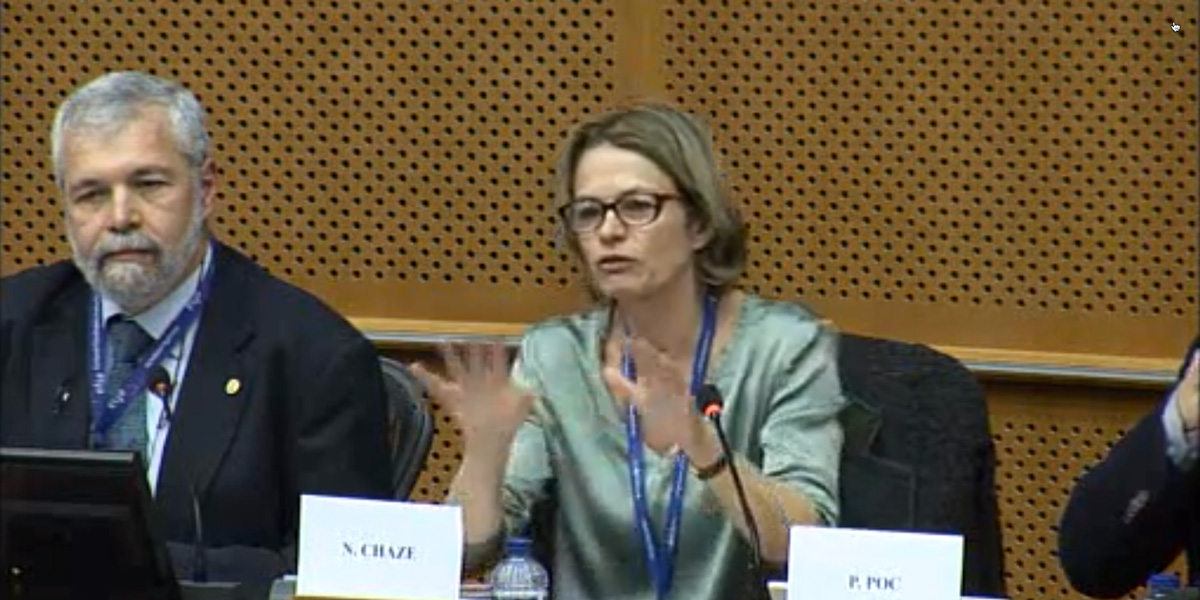
“We are opening a new area of work” in pesticide risk assessment – Commission’s Nathalie Chaze
Yesterday’s conference in the European Parliament on glyphosate’s re-approval brought a modest breakthrough in pesticide risk assessment in the form of a promise from the Commission to begin looking at the toxicity of pesticide co-formulants.
One of the main problems with the way pesticides are assessed in Europe and around the world is that only the declared ‘active principle’ or active substance of the pesticide – in the case of Roundup, that’s glyphosate – is tested and assessed for safety.
But pesticides consist of the active principle plus co-formulants. Many co-formulants are toxic in themselves and in combination with the active principle can form a chemical mixture that is far more toxic than the isolated active principle.
This shortcoming in pesticide risk assessment has drawn much criticism in recent years from the public and scientists, especially in relation to glyphosate herbicides. The critics say that there is little point in assessing the toxicity of glyphosate alone when the complete formulations as sold and used are known to be far more toxic.
Commission responds to concerns about pesticide risk assessment
In recognition of this criticism, Nathalie Chaze from the European Commission told the conference that the Commission will begin working with member states to look at co-formulants.
Ms Chaze said:
"We are aware… that looking at the [active] substance alone is only part of the picture, this was really made very obvious in the case of glyphosate. We know that people do not buy an active substance, they buy a formulation. This is what is used. In the case of glyphosate, at the beginning we had some concern. We had asked EFSA to look at tallowamine.
“The conclusion from EFSA was really clear for this co-formulant. This is why we are going to propose a ban on this co-formulant when it’s associated with glyphosate.
“In the context of the regulatory system we are opening a new area of work. This is not something we have done a lot before, looking at the co-formulant, looking at the end product, looking at something that IARC has done probably more [of], looking at the formulation and end product.
“That is why we are inviting member states to launch an identification of the co-formulants they use at home. We would like to launch together with them on defining the list of unacceptable co-formulants.
“It’s a new area of work, it will probably be resource-intensive, it’s something we need to put in place. It’s the result of lot of concerns we have heard, including from MEPs and civil society.“
First step – but important one
Dr Robin Mesnage of Kings College London gave a presentation at the conference on his team's research findings on the toxicity of glyphosate herbicide formulations.
He commented on the Commission’s move: “This is a first step, but an important one. Our studies showed that glyphosate herbicide formulations are up to 1000 times more toxic than the active principle glyphosate alone on human cells and that this is a general principle of pesticide toxicity.”
Whole mixtures
In order to take account of findings like those of Dr Mesnage and his team, the Commission should look not only at individual co-formulants but at the whole mixture formed by the ‘active principle’ and the co-formulants together, since this is what we are exposed to.
It is not enough to come up with a list of banned co-formulants.
Actual toxicological testing of complete formulations is required, since it is not possible to predict all biological effects by computer modelling or in vitro studies.
The image above shows Nathalie Chaze (right).










